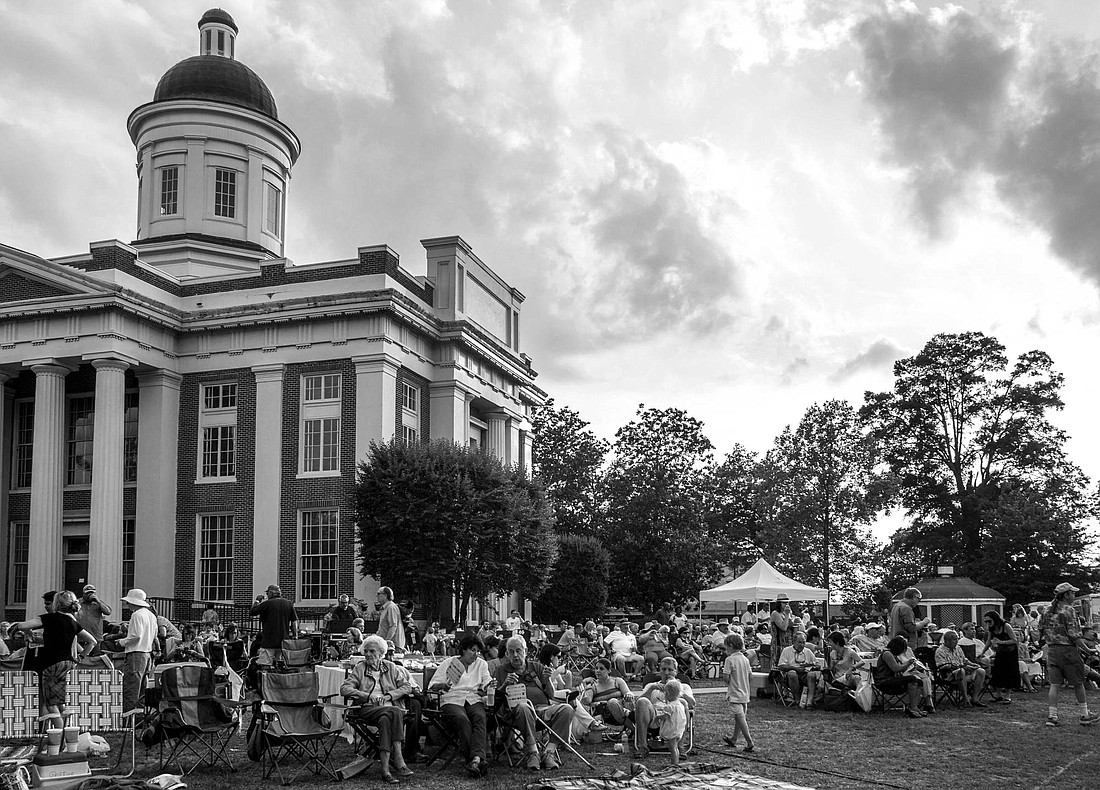- November 23, 2024
-
-
Loading

Loading

Each image in Lisette Otero-Lewis’ photographic series, “Hopes, Dreams & Realties,” has a power of its own. But when viewed as a whole it strikes like a gut punch.
The series is currently on display at Grand Gallery, housed inside Grand Living Realty at 2298 Colbert Lane in Palm Coast.
Jan Jackson, the Grand Gallery’s curator, had seen some of the photos in Otero-Lewis’ office at her own art gallery, Galleria d’Arte, in Palm Coast.
“I was always impressed,” Jackson said. “I asked her if she had enough work to do a show. She said this is actually a series.”
Jackson said that while viewing the series for the first time she was moved to tears.
“This is the strongest statement of racial injustice I’ve ever seen,” she wrote Otero-Lewis in an email.
But that wasn’t the intent when she took those black-and-white photos in 2012 to 2013.
Otero-Lewis is a lyrical documentary photographer. She develops a concept “and everything has to flow within that concept,” she says. And yet that’s not how this series came to be.
She was living in Mississippi at the time and had an art gallery in the historic Courthouse Square in the small town of Canton, Mississippi. She took photos of friends and people who came into her life.
Not until three years later, after she had moved to Punta Gorda and was offered space to put up her own exhibit that she realized she had a common thread.
“Canton is known for 'Mississippi Burning' and 'To Kill a Mockingbird,'” she said. “The Mississippi Blues Trail goes through it. If you’re going down Main Street, right before you get to the square, all those shops from left to right are African American-based owners. But once you hit the square, it stops. It has that dynamic still. This is very small town everywhere. Time kind of stands still.”
The juxtaposition of the images guides your perceptions. “Easter Best” is a photo of two young African American girls dressed for church. It is paired with a distinguished elderly white woman wearing a leopard print jacket and sitting on an antique sofa, titled “Metaphysicist.”
"She is a woman of many, many ideas. I do love her energy."
JAN JACKSON, museum curator, on Lisette Otero-Lewis
“J’Nia’s Son,” a young black boy, with the caption, “When we look into his eyes we see a boy, what we do not see is how he will be treated as a man,” is paired with “Next Generation,” a young white girl with the caption, “When we look into her eyes we see a girl, what we know is that she will be favored.”
The girl has what Jackson terms the “strangest eyes,” with a narrow dark ring surrounding her irises. Stare at the image and you feel like you are peering into her soul. Or she is peering into yours?
“Joy Within” is a photo of a black woman with an infectious smile holding an umbrella and looking to the sky.
“She is so full of life that you want to hug her so some of her joy rubs off on you,” Jackson said.
“None of my folks, black or white, are looking despaired,” says Otero-Lewis. “Even though the lady with the umbrella has the tattered dress — she was poor, that’s right — but I have her as a Facebook friend and she’s now a Mary Kay director. She’s doing very well. That image wasn’t even intentional. I was just testing my light.”
The “Metaphysicist” is Otero-Lewis’ friend, Linda.
“Of course her family has land there,” Otero-Lewis said. “She inherited the land. But when you talk to her, she’s very open-minded. She’s into metaphysics. She’s a rebel. You wouldn’t know it by looking at her.”
And that’s the dichotomy of the show. That we cannot stereotype. That we can look at an image and our perception can change. The perception of small-town Mississippi, that the people are country bumpkins, is not the reality that Otero-Lewis experienced in her time there.
They’re not even country, she said. They’re blues, they’re jazz, they’re progressive, they’re educated. “Housewives have masters,” she said.
Otero-Lewis knows what it’s like to be stereotyped. Her parents moved from Puerto Rico to Connecticut where Otero-Lewis lived until moving to Miami in the third grade.
“When I lived in Connecticut I was just American,” she said. In Miami, she said she experienced a culture clash, “being Latin, being American and having that conflict sometimes.”
Hopes, Dreams & Realities runs through June 20 at the Gallery. Hours are 9 a.m. to 5 p.m. Monday to Saturday. Admission is free. The series originally had 12 images, but Otero-Lewis added a few more for this show.
“She is a woman of many, many ideas and she does them all at the same time,” Jackson said. “But she gets them done. I do love her energy. She’s very unique.”